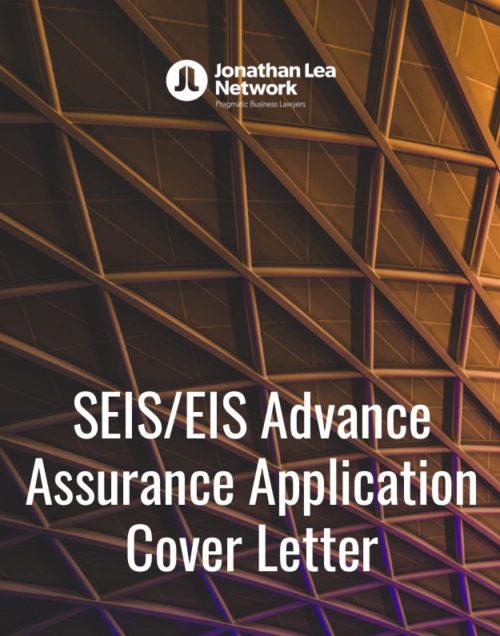Asset Purchase Heads of Terms
£6.99
The template assumes there is a single buyer and seller, but it can easily be adapted to include multiple sellers and/or buyers. If there are additional parties then you will need to amend references to “Buyer” and “Seller” throughout the document.
Words highlighted in yellow and/or in square brackets indicate areas which you will need to amend or add information. Once you have inserted all of the information highlighted or in square brackets, we recommend searching the document for ‘[‘ to make sure all square brackets (and the capitalised words within them) have been completed and removed.
Asset Purchase Heads of Terms Template
Heads of terms set out the preliminary principal terms of a proposed transaction and are entered into before definitive legal agreements are drafted, negotiated and agreed. Heads of terms come in a variety of formats are also commonly referred to as heads of agreement, a letter of intent, memorandum of understanding or a term sheet.
Although heads of terms are not generally legally binding (apart from certain sections such as confidentiality, non-poaching of employees and exclusivity that are carved out and marked as contractual obligations), they set the tone for the transaction and carry a certain amount of moral force such that once agreed it can be difficult for either party to go back on a point already set out in writing.
You can read more about why a heads of tehttps://www.jonathanlea.net/2015/why-any-transaction-needs-heads-of-terms/rms document may be important for your transaction here.
This template is in letter format and can be used to at the early stages of negotiating the purchase of defined assets of a business or company. It is not suitable for other types of transaction such as share sales, property deals or in respect of agreeing any type of commercial contract.
A free template heads of terms for a share sale is available to download here.
You can purchase a template heads of terms for use when negotiating a new property lease from our shop.
We would always recommend seeking legal advice when preparing heads of terms, particularly as a well drafted set of heads of terms will make it easier to replicate the terms in the formal sale and purchase document.
Drafting Notes
The template assumes there is a single buyer and seller, but it can easily be adapted to include multiple sellers and/or buyers. If there are additional parties then you will need to amend references to “Buyer” and “Seller” throughout the document.
Words highlighted in yellow and/or in square brackets indicate areas which you will need to amend or add information. Once you have inserted all of the information highlighted or in square brackets, we recommend searching the document for ‘[‘ to make sure all square brackets (and the capitalised words within them) have been completed and removed.
Often when a company is being acquired and the business operates from premises there is a concurrent need for a new lease to be entered into with the landlord to satisfy the buyer’s requirements. In such a case there will need to be a separate heads of terms for the new lease and a relevant template can be downloaded from our shop.
Heads of terms are not intended to be legally binding, but they are often seen as a moral commitment by the parties to observe and uphold the terms agreed between the parties, particularly as these are likely to be the main commercial terms. As a result, it is important to get them right at the outset because there may be a limited opportunity to renegotiate these terms once agreed.
We would always recommend seeking legal advice when preparing heads of terms, particularly as a well drafted set of heads of terms will make it easier to replicate the terms in the formal asset purchase document.
Key Provisions
1. Parties:
Include the name, address and company number for each of the buyer and seller (company number can be removed where a party is an individual). You can also note the names, phone numbers and email addresses of any solicitors appointed so that they will be easily to hand for all those involved with the deal. If no representation has been appointed, this can be removed.
2. Price:
The total price payable should be inserted here. For most transactions the price will a be a single cash sum payable on completion and this can be inserted where highlighted.
For more complex transactions the purchase price may be split whereby a cash sum is payable on completion and then a further amount is payable at a later point. We have not included details of the various options for structuring the purchase price here, however if some form of adjustment mechanism or deferred payment will be applied, then you should insert details of that mechanism here as well.
3. Included / Excluded Assets
It is important to be clear about what assets are included in the purchase to ensure that each of the parties clearly understand (and agreed) what assets form part of the sale. Ensuring this scope is clearly set out in a heads of terms document will make it easier to negotiate and draft the asset purchase agreement, which inevitably saves time and money, and will also enable the parties to identify whether any other documents will be required (for example property lease assignments).
There are two general approaches to defining what is included in the sale and what is excluded:
(a) All assets to be purchased with the exception of specific excluded assets: The first (which is reflected by the drafting option 1 in square brackets in section 3.1 and 3.2), is to broadly draft section 3.1 to include all of the assets used in the business but exclude specific assets in section 3.2. This option is preferable where the buyer is purchasing most of the assets and leaving only a few specific parts with the business. However, the buyer will want to be sure that it is not inadvertently acquiring assets which it had not intended to acquire, as such carefully consider what should be specifically excluded to avoid this issue.
(b) A list of specific assets with a general exclusion for any asset not specifically referred to: The second (which is reflected by the wording denoted as option 2 in section 3.1 and 3.2), is where a (typically short) list of specific assets to be acquired is provided in section 3.1 with a “catch-all” exclusion for any other assets of the business in section 3.2. Be sure to include details of all of the assets that it has been agreed that the buyer will acquire to avoid the risk of certain assets being left out of the sale inadvertently.
You could seek to list all included assets and all excluded assets separately (by using option 2 in 3.1 and option 1 in section 3.2), but this leaves room for ambiguity over scope and there is a risk that some assets might be overlooked, which could give rise to future disputes over ownership of certain assets.
The template includes a list of commonly acquired / excluded assets which can be deleted or amended as appropriate to fit the specific transaction. You can remove the references to including further details below if this is not relevant (see optional section 13, below).
4. Conditions
The sale of the assets will usually be subject to the successful completion of certain conditions. The most common conditions are the need to obtain certain third party consents from organisations like banks and landlords, but may simply be procedural such as the buyer conducting satisfactory due diligence on the business and assets, obtaining corporate approvals from shareholders as well as entering into a detailed and legally binding asset purchase agreement.
The template includes some standard conditions which can be amended / removed as appropriate. Equally the parties may have agreed bespoke conditions which will need to be recorded here.
5. Employees
The parties will need to consider the impact of the Transfer of Undertakings (Protection of Employment) Regulations 2006 (SI 2006/246), otherwise known as TUPE, on the transaction. In most cases employees who are employed by the business and who are assigned to work in the area of the business being transferred, will automatically transfer as part of the sale of the assets, unless the individual employees themselves object.
All of the employment terms for those employees that transfer under TUPE must remain the same and the ability to amend the employment terms is limited. However, if it is proposed that certain employees will be required to enter into new employment contracts then details should be included at section 5.2 (although be mindful of confidentiality obligations and the risk of those employees seeing this before the deal is agreed), otherwise section 5.2 can be removed.
You can read more about the impact for employees in business sales here.
6. Restrictive Covenants
Include this section if the buyer expects the seller to enter into any form of non-compete, non-dealing or non-solicitation covenant in the asset purchase agreement. Covenants of this type can be controversial as they will often limit the behaviour of the seller so as not to compete with or effectively poach customers or staff from the business. As such we recommend that any such restrictions be discussed early in the transaction process in case it is a deal breaker for either party.
The template includes some common examples, but it can be removed entirely if the parties are not proposing to include any non-competes or non-solicitation provisions. For example, if the assets being acquired are machinery and equipment, it may be unreasonable for the buyer to seek restrictive covenants from the seller where they are continuing the business post-completion.
Each restrictive covenant should be stated to be limited to a certain period and the parties will need to agree how long a particular restriction should operate (and insert this period as shown in yellow highlight). Otherwise, without a specified end point the restrictions will be perpetual and the seller will be restricted indefinitely.
Depending on the bargaining power of the parties, usually a period of 12 months is a reasonable period for the restriction to operate.
7. Timing
There are two ways in which a transaction can complete.
(a) Simultaneous exchange and completion: This is where the parties sign the asset purchase document, pay the purchase price and complete the sale of the business on the same day.
(b) Split exchange and completion: This is where the asset purchase agreement and other transaction documents are signed on an agreed date but completion of the sale and transfer of the assets occurs sometime after. Normally, a split signing and completion is required where there are conditions which need to be met or where the parties need to consider any price adjustment before the sale is completed.
7.4 should be amended to select which option the parties intend to adopt, option 1 should be used for simultaneous exchange and completion, whereas option 2 should be used for split exchange and completion. Simply complete the information highlighted in yellow and delete the option which is not being used.
The dates are not stated to be binding on the parties and are merely expressed as an intention. If the date is unknown, the parties could include a period of time or target completion before a specific date. For example, the parties intend to complete within 2 months of the date of the heads of terms.
It is common for the heads of terms to include a right for the buyer to terminate the negotiations at any time without reason, but 7.5 can be amended to reflect the terms agreed between the parties.
8. Exclusivity
It is not always the case that the parties will agree a period of exclusivity, however the benefit of doing so is that it gives both parties certainty that the other party is committed to the deal. You can read more about exclusivity periods and why they are important here.
The template includes fairly standard exclusivity wording and during the specified period the seller may not look for, provide information to, or negotiate with other possible buyers. Subject to the terms agreed between the parties, the exclusivity may extend to the seller’s group, where this is relevant, or the parties may agree to amend the scope of what the seller may do during the exclusivity period.
For most small private company transactions, a period of around six weeks would be a sufficient time frame within which completion can occur before the exclusivity ends.
Exclusivity periods set out in a heads of terms document are intended to be binding on the parties.
9. Confidentiality
Confidentiality will play a key part in the transaction. The seller will want the buyer to agree not to disclose any confidential information about the target company and business it receives during the negotiation process. However, this duty is often made reciprocal as information will also be flowing from the buyer to the seller and the parties in any case will want to keep the proposed transaction itself confidential.
There are two options to address confidentiality at the early stages of a transaction:
(a) Separate confidentiality / non-disclosure agreement: For larger transactions or where the disclosure of confidential information would cause significant adverse consequences to the seller or buyer, then more detailed confidentiality provisions may be appropriate and the parties can choose to enter into a separate document setting how confidential information must be treated, who is may be shared with and the obligations on each party to hold this information in confidence. If this is the approach to be taken, use drafting option 1 (insert the date of the agreement where indicated). A free template non-disclosure document is available here.
(b) Including confidentiality provisions in the heads of terms: If the parties are not entering into a separate confidentiality agreement, then drafting option 2 in the template includes general confidentiality provisions that should cover most transactions. These are reciprocal (i.e. both parties have an obligation to keep each other’s information confidential) and includes some general exceptions to this rule.
You should delete the option not being used.
The confidentiality provisions in a heads of terms document are intended to be legally binding.
10. Governing Law and Jurisdiction
There should be no need to change this section as it includes standard wording.
11. (Optional) Asset Section
Section 13 can be used to include specific details of a key asset (for example intellectual property or specific commercial contracts for key business partners) for which specific steps or terms have been agreed between the parties (for example, if a separate document will be needed to assign intellectual property rights). This additional section may be helpful to record what has been agreed between the parties in respect of that particular asset.
This section can be removed if not required.
12. (Optional) Other Key Terms / Documents
Think about whether there are other documents (aside from the asset purchase document) or issues to be dealt with outside of the asset purchase document.
For example, the sale may include property for which a lease needs to be assigned to the buyer pursuant to a separate assignment between the landlord, the seller and the buyer.
This section can be removed if not required.
Execution
At the end of the heads of terms document, insert the full name of the buyer and the seller (insert additional signature blocks where there are additional parties that need to sign) then both parties should sign and date where indicated to acknowledge their acceptance of the terms.









